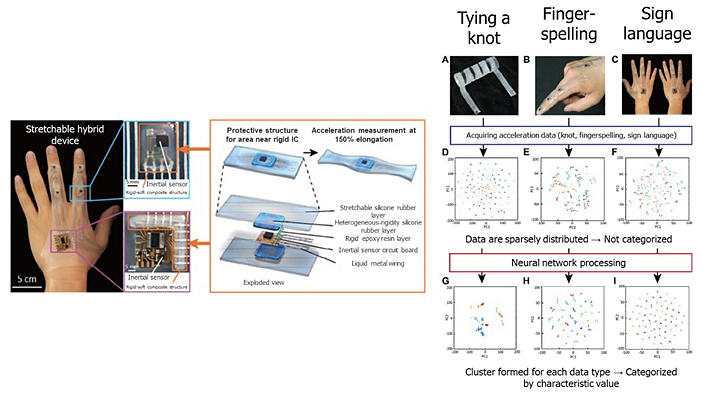In recent years, "stretchable devices" containing elastic components, such as electronic circuits and circuit boards, have been attracting attention. The integration of AI technology into such devices for the interpretation of data obtained from the devices is expected to allow the development of more sophisticated systems. However, because such devices are susceptible to degradation due to repeated use and fluctuations in measurement results owing to individual differences, integration of AI into them is not progressing.
A research group led by Associate Professor Hiroki Ota of the Faculty of Engineering at Yokohama National University developed a "stretchable hybrid device" that combines a rigid integrated circuit with an electrical circuit that stretches using a liquid metal and a rubber-like substrate, enabling high flexibility and data reproducibility. Even when the device is stretched to 2.5 times its length, it maintains the same data measurement accuracy and reproducibility as those of rigid inertial sensor integrated circuits. Additionally, the device was used to collect data regarding the hand movements of a person tying a knot in a string, writing letters in the air, and conversing through sign language.
The results were then classified using AI, which identified 10 different knot shapes, 26 letters written in the air, and 65 English sign language words from the movement patterns with high accuracy rates of 87%, 98%, and 96%, respectively. This showed that flexible devices can have the same measurement capabilities as existing rigid sensors and that AI integration is possible, proving that smart motion recognition systems are feasible. These results are expected to lead to the realization of new systems that go beyond the framework of simple measurements using flexible devices, such as motion and shape recognitions.





